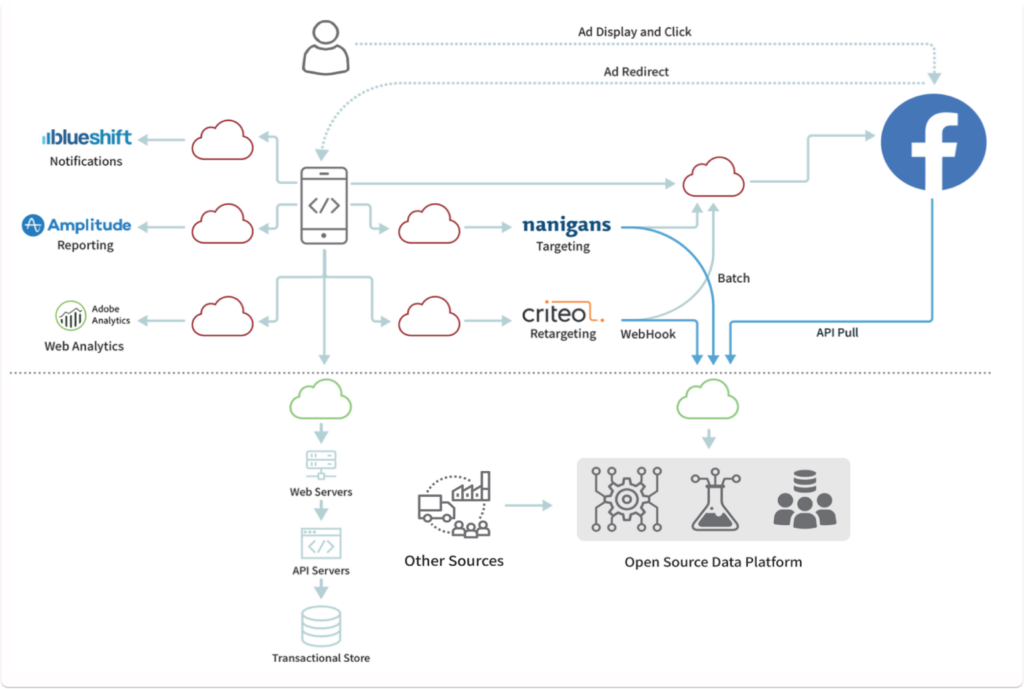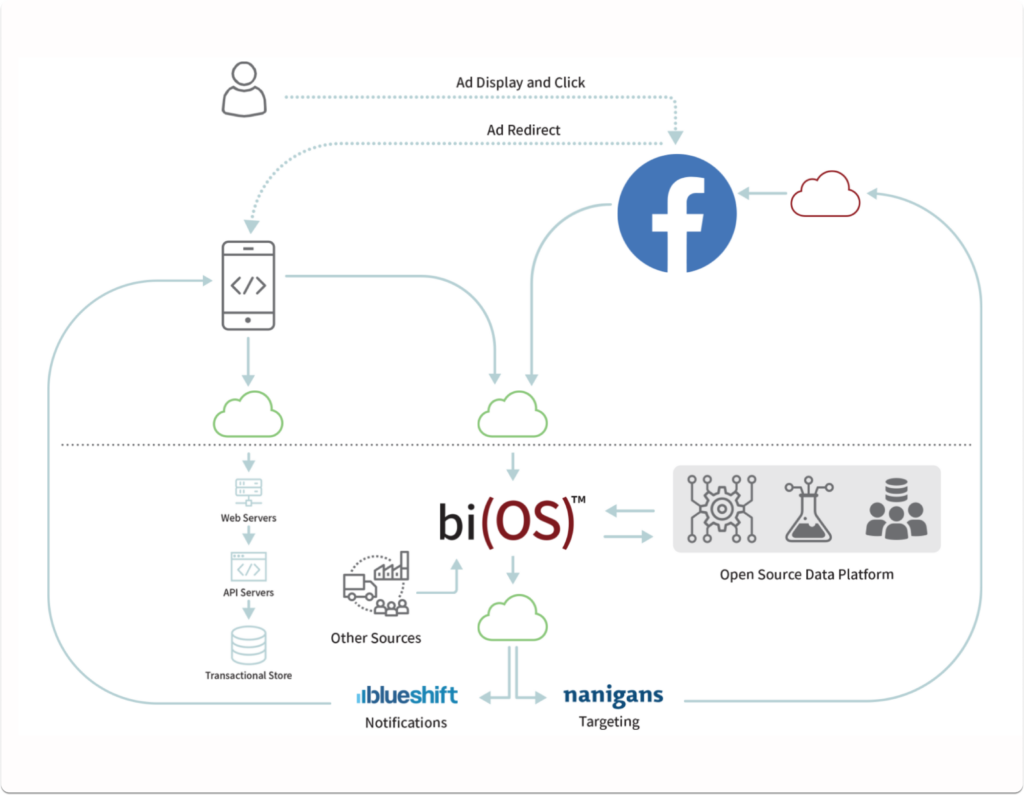Introduction
The world’s largest eCommerce player uses zero third-party pixels. The second largest uses 20+. The second-largest player has 6X lower traffic and 2X worse conversion after 20+ years of eCommerce. Is it a coincidence? We think not. The last decade of SaaS-based crutches to optimize the eCommerce funnel has failed. As consumers demand ever-increasing privacy, the walled gardens of Google and Apple are responding with tightening around third-party support. It’s time for a new way to approach eCommerce analytics that optimizes conversions, customer experience (CX), and privacy.
The Anatomy of Third-Party Pixels
A user is browsing Facebook (one of the 8B humans on Earth). An ad shows up for your product based on Facebook’s algorithms, which the user clicks on and ‘lands’ on a page on your app. Sound familiar? What happens afterward is a frenzy that the below illustration tries to capture. A host of 3rd party trackers (‘pixels’ in industry parlance) are activated (an HTTP request made to the 3rd party SaaS provider). These 3rd party providers promise to provide some service to you (usually a dashboard, optimize ad-spend on FaceBook, target better users, etc.).

This approach has the following issues:
- Consumer Perception
- Each pixel slows down the application CX.
- Consumers flee brands that are lax on privacy, causing churn.
- Financial
- Slower apps are penalized by the ad networks causing higher CPA.
- Each 3rd party SaaS provider charges by the event, which explodes cost.
- Soon, a 3rd–party helper shows up to help manage “the zoo” (for a fee).
- Legal
- Contracts and regulations can’t de-risk data misuse or theft at a 3rd-party.
- Reconciling the privacy policies of developers and SaaS vendors is DOA.
- Technical
- Each 3rd-party provider has a ~70% overlap in the data it consumes.
- Each 3rd-party provider adds extra backend load.
- Data engineers spend non-trivial effort collecting that data back.
So how do we solve this? Use bi(OS) and go back to basics.
The First-Party Advantage with bi(OS)

bi(OS) is deployed as a first-party analytics solution on the cloud and region of a customer’s choice. This single-tenant PaaS product offers the highest level of governance on the Cloud. It exposes an endpoint https://bios.<customerdomain>.com and provides an efficient javascript tag to send data to bi(OS) from the browser. Data Engineers can push relevant, governed data to the most critical 3rd-party SaaS providers with a few lines of Python code. Internal data teams can then use this data to build nimble business-impacting data apps. Further, bi(OS) enables a 70%+ reduction in data transfer without losing fidelity to achieve the best CX.
Conclusion
Third-party analytics hurts eCommerce conversion, experience, and privacy. Consumers expect brands they interact with to utilize their interaction to provide better CX. They are uncomfortable when brands outsource such capabilities to a bazaar of 3rd-party providers buried within the arcane T&C. Movements afoot within the walled gardens of Google and Apple will make this a necessity. Isima’s bi(OS) allows brands to implement first-party analytics within days that outperform 3rd-party providers by miles, deliver the best CX for consumers and maximize conversions. It optimizes for a brand to retain and treat its most valuable data as an asset. This approach is the secret weapon of the leaders. For years, Isima’s product teams have used bi(OS) as a first-party analytics solution to optimize its UX.
1 Hour to BI, 1 Day to AI, and 1 Week to API. To get started for free, click here.
